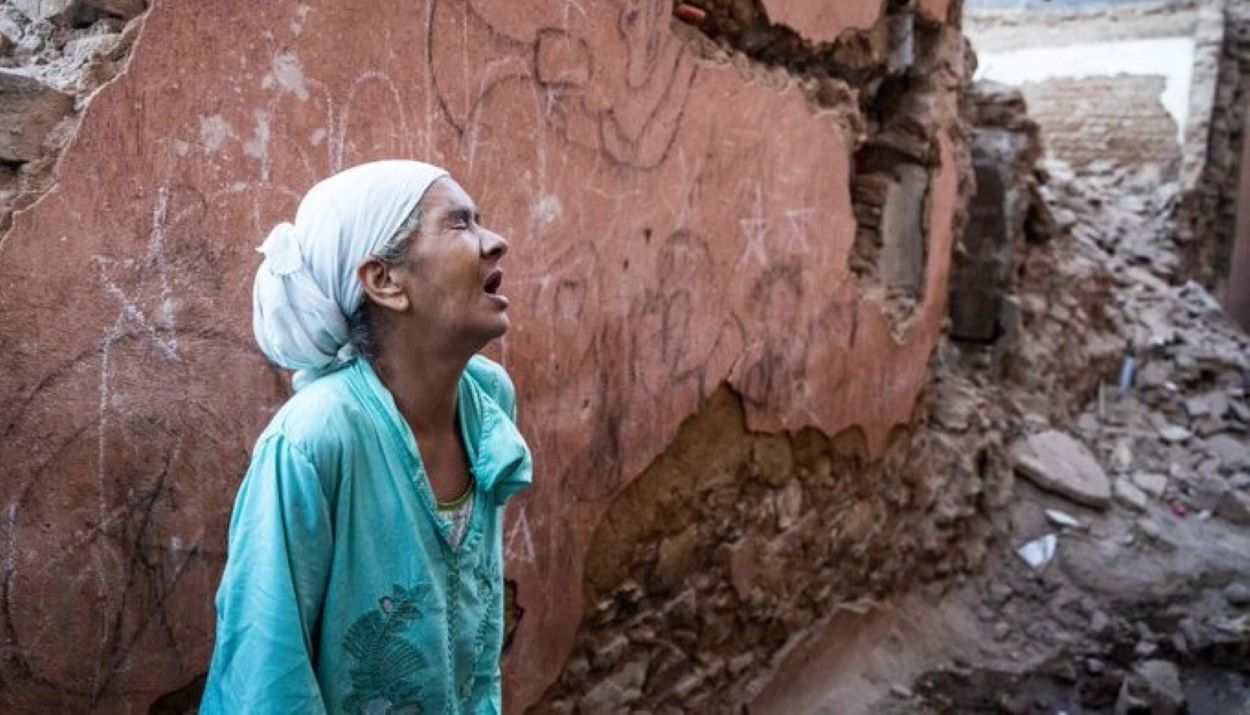In the wake of the devastating magnitude of the 6.8 earthquake that rattled Morocco on Friday, there has been rising concern regarding potential aftershocks in the region. The catastrophic event impacted areas predominantly southwest of Marrakech city, in the High Atlas mountains. The calamity resulted in significant damage to historical structures in the closest city to the epicentre and has, to date, claimed over 2,012 lives and left 2,059 individuals injured, with over 1,000 of them in critical condition.
Philippe Vernant, a renowned specialist at the University of Montpellier, engaged in a detailed conversation with AFP, highlighting the seismic history of Morocco and the underlying factors contributing to this recent tragedy. Notably, he emphasized that Morocco’s geographical positioning makes it susceptible to such seismic events, drawing parallels with past occurrences, including the devastating Agadir earthquake in 1960 and the Al Hoecima earthquake in 2004.
Geological Underpinnings and Comparisons
Vernant further delved into the geographical nuances that contribute to the seismic activities in the region. He pointed out that the recent quake’s epicentre is not situated in Morocco’s most active seismic zone. However, the High Atlas mountains’ geological composition and history are closely linked to such occurrences, which have, over centuries, contributed to the formation and elevation of this mountain range.
To explain the dynamics at play, Vernant drew a comparison with Turkey’s seismic activity, highlighting the differences in tectonic movements between the two regions. While Turkey experiences horizontal movements due to its westward shift towards Greece, Morocco witnesses a more converging interaction between the African and Eurasian or Iberian plates, resulting in overlapping fault lines. Despite the varied dynamics, both regions grapple with the complex realities of plate boundaries and the subsequent seismic activities.
The Recent Morocco Earthquake
To fully grasp the gravity of the recent earthquake in Morocco, Vernant discussed the potential factors that could have contributed to its violent nature. He noted that the estimated magnitude of around 6.8 to 6.9 denotes a substantial seismic event characterized by significant displacement along the fault line, spanning several kilometres and occurring within a few seconds. This rapid movement, unfortunately, led to substantial shaking in the affected regions.
Furthermore, Vernant highlighted the significant role of the earthquake’s depth in determining its impact. Initial estimations suggested a depth of around 25-30 kilometres, but newer data suggests a shallower depth, closer to 10 kilometres. This proximity to the surface amplifies the rupture effects, akin to the 2019 earthquake in France’s Teil region, which, despite its smaller magnitude, caused substantial damage due to its minimal depth.
Aftershocks and the Challenge of Prediction
Turning his attention to the expected aftermath, Vernant warned of inevitable aftershocks. Even if these aftershocks register a lower magnitude, they can bring down structures weakened by the primary quake. Drawing from the patterns observed in Turkey, where one seismic event triggered another, Vernant cautioned about the possibility of a cascading effect, sometimes resulting in an even stronger aftershock following the initial earthquake.
On predicting such events, Vernant admitted to the inherent challenges and uncertainties. While efforts are being made to estimate recurrence periods based on the varying magnitudes of past earthquakes, predicting the exact behaviour of seismic activities remains an elusive goal. This erratic nature of earthquakes, characterized by sporadic high-magnitude events followed by long periods of seismic silence, continues to pose challenges in developing effective prediction mechanisms.







